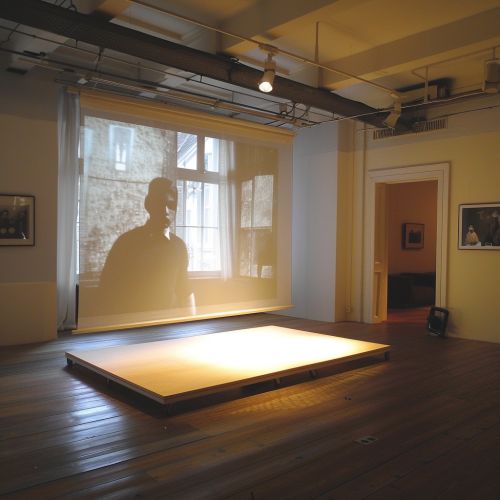Mieke Bal
Early Life and Education
Mieke Bal was born on March 14, 1946, in Heemstede, Netherlands. She pursued her higher education at the University of Amsterdam, where she earned her Ph.D. in French Literature in 1977. Her dissertation focused on the work of French novelist and critic Marcel Proust, which laid the foundation for her future interdisciplinary approach to literary and cultural studies.
Academic Career
Early Academic Work
Bal's early academic career was marked by her work on narrative theory and the analysis of literary texts. She became known for her innovative approach to narratology, a field that studies the structure of narratives. Her seminal work, "Narratology: Introduction to the Theory of Narrative," first published in 1985, has been widely influential in both literary studies and beyond. This book provides a comprehensive framework for analyzing narrative structures, focusing on elements such as focalization, temporality, and narrative voice.
Interdisciplinary Approach
Bal's work is characterized by its interdisciplinary nature, bridging the gap between literature, visual arts, and cultural studies. She has been a prominent figure in cultural analysis, a field that examines cultural phenomena through a multidisciplinary lens. Her book "Reading Rembrandt: Beyond the Word-Image Opposition" (1991) is a prime example of her interdisciplinary approach, where she analyzes the works of the Dutch painter Rembrandt by combining art history, literary theory, and cultural analysis.
Visual Arts and Exhibitions
In addition to her written work, Bal has been actively involved in the visual arts. She has curated several exhibitions and created video installations that explore themes of memory, identity, and history. Her video installation "Nothing is Missing" (2006) is a poignant exploration of the experiences of women who have lost their children. This work exemplifies her ability to blend academic research with artistic practice, creating a dialogue between different forms of cultural expression.


Major Works and Contributions
Narratology
Bal's contributions to narratology have been foundational. Her work has expanded the field beyond its traditional boundaries, incorporating insights from semiotics, psychoanalysis, and feminist theory. In "Narratology: Introduction to the Theory of Narrative," she introduces key concepts such as focalization, which refers to the perspective through which a narrative is presented. This concept has been instrumental in subsequent narrative analysis, allowing scholars to dissect the layers of perspective and voice within a text.
Cultural Analysis
Bal's approach to cultural analysis is deeply rooted in her belief in the interconnectedness of different cultural forms. In her book "Travelling Concepts in the Humanities: A Rough Guide" (2002), she argues for the use of "travelling concepts"—terms and ideas that move across disciplinary boundaries and acquire new meanings in different contexts. This approach has been influential in promoting a more fluid and dynamic understanding of culture, encouraging scholars to think beyond rigid disciplinary confines.
Visual and Cultural Studies
Bal's work in visual and cultural studies has been equally impactful. Her book "Quoting Caravaggio: Contemporary Art, Preposterous History" (1999) examines the ways in which contemporary artists engage with the works of the Baroque painter Caravaggio. By analyzing these interactions, Bal reveals the complex dialogues between past and present, showing how historical artworks can be reinterpreted and recontextualized in contemporary settings.
Theoretical Innovations
Focalization
One of Bal's most significant theoretical contributions is the concept of focalization. In narratology, focalization refers to the lens through which a narrative is perceived. Bal distinguishes between different types of focalization, such as internal and external focalization, to analyze how narratives control the flow of information and shape the reader's perception. This concept has been widely adopted in literary studies and has influenced the analysis of narrative structures in various media, including film and visual art.
Travelling Concepts
Bal's notion of travelling concepts has been a groundbreaking contribution to cultural analysis. By advocating for the mobility of concepts across disciplines, she challenges the traditional compartmentalization of academic fields. This approach encourages scholars to adopt a more integrative and holistic perspective, fostering interdisciplinary research and collaboration. Travelling concepts such as "memory," "identity," and "space" have been particularly influential in studies of culture and society.
Preposterous History
In "Quoting Caravaggio," Bal introduces the idea of preposterous history, a term that describes the anachronistic relationship between contemporary art and historical works. By examining how modern artists quote and reinterpret Caravaggio's paintings, she demonstrates how historical narratives can be disrupted and reimagined. This concept has opened new avenues for the study of art history, encouraging scholars to explore the temporal dynamics of artistic influence and reinterpretation.
Influence and Legacy
Academic Influence
Bal's work has had a profound impact on a wide range of academic fields, including literary studies, art history, and cultural analysis. Her interdisciplinary approach has inspired scholars to adopt more integrative methodologies, breaking down the barriers between different academic disciplines. Her concepts of focalization and travelling concepts have become essential tools in the analysis of narrative and cultural phenomena.
Pedagogical Contributions
In addition to her research, Bal has made significant contributions to pedagogy. She has taught at various institutions around the world, including the University of Amsterdam, Columbia University, and the University of Rochester. Her teaching philosophy emphasizes the importance of critical thinking and interdisciplinary inquiry, encouraging students to engage with complex cultural texts and phenomena from multiple perspectives.
Artistic Collaborations
Bal's collaborations with artists and curators have further extended her influence beyond academia. Her video installations and curated exhibitions have been showcased in galleries and museums worldwide, bringing her theoretical insights into the public sphere. These collaborations have demonstrated the practical applications of her research, highlighting the relevance of academic scholarship to contemporary cultural practices.
Selected Bibliography
Books
- "Narratology: Introduction to the Theory of Narrative" (1985)
- "Reading Rembrandt: Beyond the Word-Image Opposition" (1991)
- "Quoting Caravaggio: Contemporary Art, Preposterous History" (1999)
- "Travelling Concepts in the Humanities: A Rough Guide" (2002)
- "Of What One Cannot Speak: Doris Salcedo's Political Art" (2010)
Articles
- "The Point of Narratology" (1988)
- "Visual Essentialism and the Object of Visual Culture" (2003)
- "Autotopography: Louise Bourgeois as Builder" (2011)
